Conservation of models at Cork Cathedral 'could be world famous'
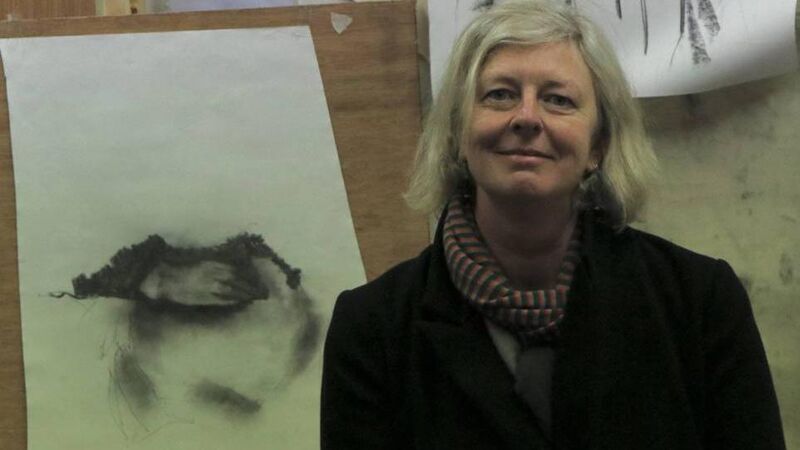
Artist Orla O’Byrne in her studio.
ARTIST-in-residence at St Finbarre’s Cathedral, Orla O’Byrne, is involved in a remarkable project that aims to end with an exhibition of historic value this year.
She is working to conserve and then display Gothic revival maquettes (plaster models) that were used when the landmark Cork city cathedral was being built in the mid-19th century.
As Orla points out, maquettes don’t normally exist after being used. But a sizable collection of them has survived since the time of the construction of the current cathedral in 1865, when the foundation stone was laid.
These objects played a crucial role in the creation of the renowned stone carvings which adorn the building. They are handmade models whose measurements were transferred to stone using a precise measuring tool called a pointing machine.
Orla says a conservationist who came to see the plaster maquettes drying out in the cathedral where they are being restored and exhibited was “gobsmacked” He said ‘This could be world famous.’ I got goosebumps when he said that.”
The usual practice would have been to destroy the maquettes once their purpose had been served. In this case, that didn’t happen, due to the building of the Cork cathedral running over budget, with no funds left to dispose of the plaster models.
Orla, a graduate of the Crawford College of Art and Design and chairperson of the Backwater Artists’ Group, completed an MA in art and process with first class honours in 2022. She is hugely excited about her residency at the cathedral. It involves following these archival materials on their journey towards restoration.
Currently, there is a small ‘fluid’ exhibition of a few of the maquettes. That will grow and it’s expected the exhibition will be formally launched before the summer.
“I will create a body of work through prolonged engagement with the collection,” said Orla. “As the conservation project unfolds, the resulting artworks will aim to enhance our understanding and appreciation of these treasured objects and their history.”
Having spotted some maquettes outside the cathedral which were drying out before being brought inside the iconic building, Orla’s curiosity was piqued. She got talking to the operations manager at the cathedral, Eoin Murphy, who knew she would be interested in what was going on
The maquettes had mostly been stored in the damp basement of St Finbarre’s. There is urgency about the restoration project as the objects could further fall apart.
“They’re a very precious collection because they were made specifically for this building,” says Orla, in an office in the cathedral.
They were made according to architect William Burges’s design by Thomas Nicholls, who did a lot of work with Burges.
“I saw some maquettes drying out on the floor of the south isle of the cathedral,” said Orla. “I wrote a proposal to the Dean of St Finbarre’s, Very Rev Nigel Dunne, saying that I believed he should have an artist-in-residence to follow the objects on their journey.”
Orla points out that it’s not the artist’s job to try and do the work of historians or conservationists.
“The artist has special training as well, and I wrote that if you have an artist on board, there will be a richer outcome.
“My drawings and my interpretation and the talks I’ll be doing will tell the story of these magnificent things and how they got conserved.”
The powers-that-be at the cathedral thought Orla’s proposal was “a brilliant idea”. The conservation work is “a huge project with experts involved. It’s quite a daunting project. What I have on display in the cathedral is a fraction of what is going to be in the exhibition when it’s ready.”
There are maquettes for everything from gargoyles to full figures.
“It’s everything you see on the outside and the inside of the building. There’s lots of little scenes and tableaux.”
Orla says she “has form” when it comes to proposals for artist-in-residencies.
“I was artist-in-residence at the Crawford Art Gallery one and a half years ago. I persuaded them that they needed the role because the Crawford is on the cusp of huge redevelopment. It was time to take stock.
“They let me go behind the scenes and photograph and make work about the old rooms that won’t be there anymore such as the lecture theatre. I had an exhibition about it which was my MA project as well.”
The residency at St Finbarre’s Cathedral “is a very intuitive thing. The door just opened to me. The dean is so positive about it. I think the cathedral wants to be involved in the arts.
“The cathedral itself is a work of art. Burges was the kind of architect for whom there was no difference between the structure of the building and how beautiful and artistic it looks. He was really into the whole decoration of it.”
Orla’s background and practice is all about historical artefacts and historical places.
I’m not so interested in our given history. I’m interested in what’s behind-the-scenes. There’s lots of stories we tell ourselves over and over. I like to delve into those histories and pull out something that is a little bit different, that tells a different story.
There is “a big drive on” to get funding for the project.
“I think the Heritage Council should be very interested. The maquettes are at a critical point. They really need help right now.
“It’s a matter of getting people to see the importance of the maquettes. They can’t be dried out too quickly. They have been in the basement with almost 100% humidity.
“If you quickly put them somewhere to dry, they’ll just break into bits. The cathedral is ideal for them.”
Orla is in no doubt of the importance of St Finbarre’s Cathedral to Cork people. Her teenage daughter Suan has been a member of the choir there for eight years.
“I think I was probably sitting outside in the car park a lot waiting to collect her and looking at the stone sculptures,” she says.
Little did Orla know that she too would have a role in the culture of the cathedral.
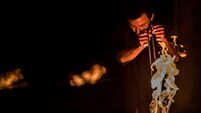
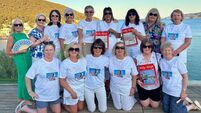
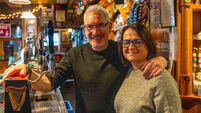
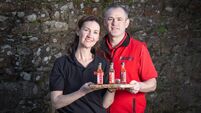
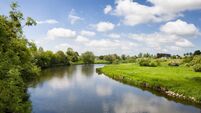


 App?
App?


